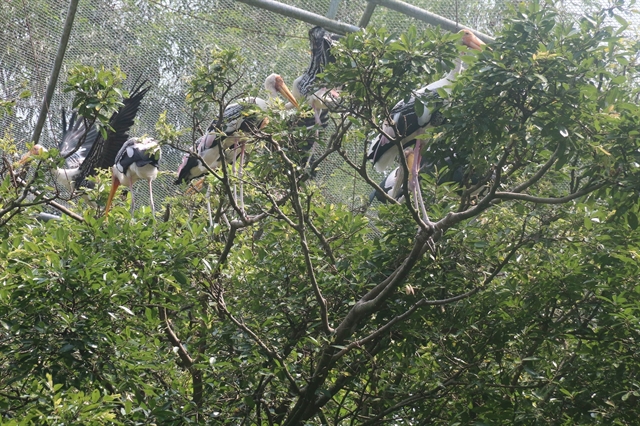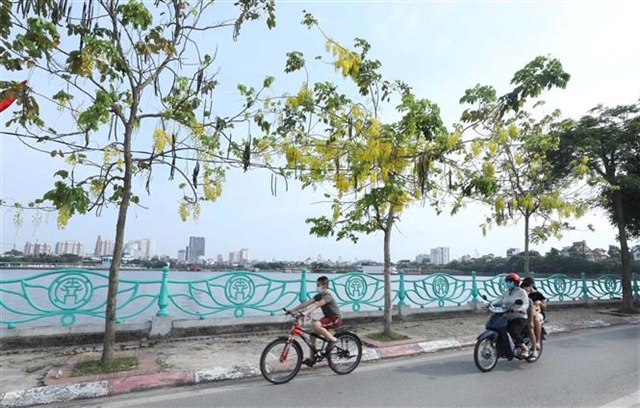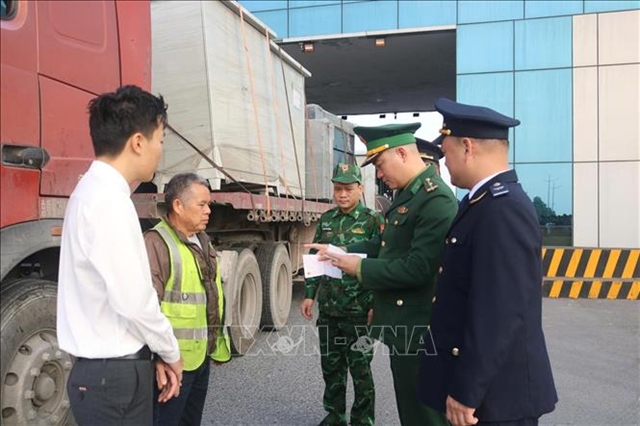 Environment
Environment

Architect Trần Huy Ánh spoke to VietNamNet online newspaper about the importance of natural ponds and lakes as Hà Nội's bodies of water are being filled in to make way for real estate development.

|
| A corner of West Lake, Hà Nội. VNA/VNS Photo |
Architect Trần Huy Ánh speaks to VietNamNet online newspaper about the importance of natural ponds and lakes as Hà Nội's bodies of water are being filled in to make way for real estate development.
What is your opinion on efforts to maintain the water surface in the capital?
Hà Nội's master plan to 2030 has set the goal of "Green - Clean - Civilised", including a green corridor accounting for 70 per cent of the natural area with rivers including the Đáy River, Nhuệ River, Tích River, Red River and Đuống River.
There is a criterion that new urban areas must use more than 10 per cent of the area to create new water surfaces.
In the past 10 years, the protection of lakes has not been effective. In the next 10 years, it is necessary to increase lake surface, renovate existing ponds and lakes, and dredge rivers to make up for the hundreds of thousands of hectares of rivers, lakes and semi-submerged low-lying fields that have been filled up for real estate projects.
There are natural lakes, like the West Lake, that are polluted. If you cycle every morning around the West Lake, you can smell the waste right away.
Where does the wastewater from hundreds of real estate projects and houses on the lakeside go? The evaluation report published by the Hà Nội Department of Planning and Architecture in October 2021 said the wastewater treatment plant near the lake is now having difficulty receiving wastewater.
In Long Biên District, the authority has been filling in natural ponds and lakes, saying they will build new artificial lakes, what do you think about this approach?
A natural lake has a different value than an artificial lake because it forms a cyclic, organic ecosystem by itself. The lake associated with the real estate project creates a beautiful landscape, but there are lakes that cause harm to the environment if chemicals are abused to treat water pollution, or artificially salted water. In a short time the water in the lake will be dead water that cannot be regenerated.
The race for commercial value is the job of real estate developers. Creating a sustainable living environment for people is the responsibility of all levels of the government.
We need to clarify two types and two responsibilities. It is difficult to ask real estate developers to take care of the quality of life for the community. They only have commercial liability to their customers.
The responsibility to protect the living environment for the people is none other than the authorities and the people need to strengthen supervision in accordance with the law. More specifically, people can supervise to see if the filling of a natural lake or digging a new lake is really for the benefit of the community.
In 2008, the Long Biên area was severely flooded despite being very close to the two basins of the Red and Đuống rivers. What solutions are needed to make use of natural ponds and lakes for drainage and preventing flooding?
Long Biên (Gia Lâm area and its vicinity) has been flooded for a long time. Previously, when it was flooded, the street would be flooded first and then the lakes. Now the lake is filled, so streets are inundated, the residential areas on both sides of the old streets have been flooded for decades. The movement to fill lakes, low-lying fields and sell land is still increasing.
While there is no system to collect wastewater and surface water and pump wastewater into rivers, the solution is to increase the area of lakes and ponds, even parks, gardens, sports playgrounds, etc., with low-lying terrain to collect water when it rains.
It creates water batteries: instantly collects water that does not flow into residential areas to the ground or slowly into drainage channels and sewers. When the rain and flooding is over, it will be dry again and back to the function of public space and urban landscape.
If designed well, these semi-submerged low-lying areas will be combined into a multi-purpose space, adapting to extreme situations caused by flooding or increasingly complex droughts.
We need master solutions, but each specific small solution for a small pond also needs to be calculated carefully. If we don’t do small things carefully, we can’t have a good plan for the whole area.
How is the protection, planning and preservation of natural lakes implemented in big cities of other countries?
Most developed countries have also experienced the destruction of natural resources leading to pollution, so they "have waken up" and actively protected the environment.
For example, the Thames River in London once was filled with garbage, which was the cause of water pollution and cholera in the city.
The city’s authorities were determined to change, building their own sewage system that did not enter the river, creating strict regulations and the Thames and all rivers and lakes in England were strictly protected.
After the war, Japanese cities saw fast industrial development, discharging toxic wastewater from factories, polluting residential areas. They also steadfastly pursued the policy of "he who discharges has to pay". The “Law on water environment protection” has permeated into every citizen and protecting rivers and lakes has become part of the Japanese way of life.
Countries around us like Singapore or Malaysia are good examples of the world's most advanced legal system and solutions to protect clean water, rivers and lakes. VNS




